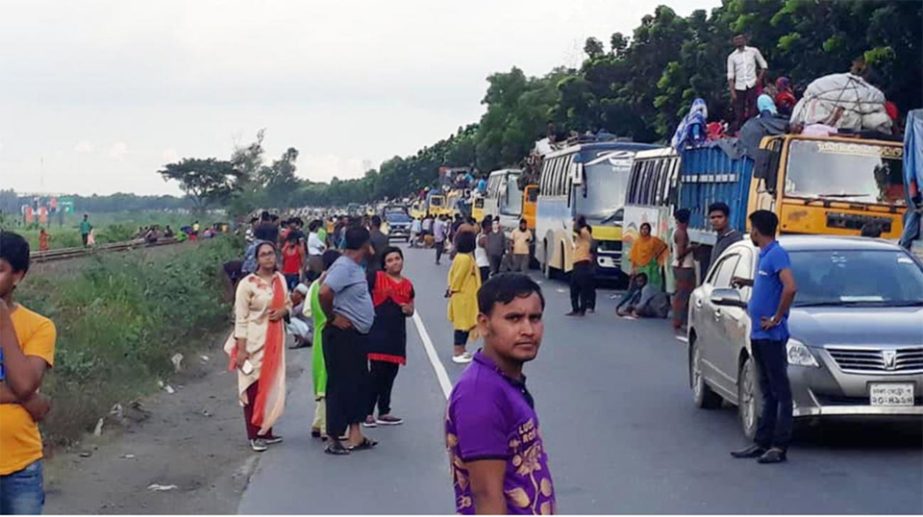
Francesca Baker :
We’ve all been there. Stuck at traffic lights that never seem to change to green. Sitting in queues of cars that stretch on for miles or delayed by a glut of slow traffic that suddenly disappears. Traffic jams are a blight on our modern, fast moving lives. And we have been dealing with them in a very unmodern way.
We don’t move about and travel in the same way that we used to, yet our traffic management systems have struggled to keep pace with the relentless onslaught of vehicles they have to deal with now. Jam-busting measures are often slow to react to changes in road or weather conditions and many traffic lights still work on timers that are often out of synchronisation, preventing vehicles from flowing freely.
In 2015 there were an estimated 1.3 billion motor vehicles on the world’s roads and with growing affluence in developing economies that number is expected to soar to over 2 billion by 2040. Even with new roads and bypasses, this ever increasing level of traffic could quickly outstrip the ability of our road networks to cope in many busy areas, such as cities.
But by combining new communications technology with the power of artificial intelligence (AI) to crunch vast amounts of data in real time it may be possible to ease our clogged roads so they can cope with the growing number of cars.
While many see self-driving vehicles as the panacea for traffic jams, it will be at least two decades before they start to make a meaningful impact on our roads
While many see self-driving vehicles as the panacea for traffic jams – provided these robotic vehicles can be taught to drive less erratically and react faster than human motorists – it will be at least two decades before they start to make a meaningful impact on our roads. In the meantime, highways agencies and city planners will have to cope with an ever-more complicated mix of human, semi-autonomous and autonomous drivers on the roads. Keeping them all moving will require traffic management systems to be instantly reactive and adaptable.
In Bengaluru, India, which regularly faces long traffic jams and the average speed on some roads at peak hours is just 4km/h (2.5mph), Siemens Mobility has built a prototype monitoring system that that uses AI through traffic cameras. -BBC
We’ve all been there. Stuck at traffic lights that never seem to change to green. Sitting in queues of cars that stretch on for miles or delayed by a glut of slow traffic that suddenly disappears. Traffic jams are a blight on our modern, fast moving lives. And we have been dealing with them in a very unmodern way.
We don’t move about and travel in the same way that we used to, yet our traffic management systems have struggled to keep pace with the relentless onslaught of vehicles they have to deal with now. Jam-busting measures are often slow to react to changes in road or weather conditions and many traffic lights still work on timers that are often out of synchronisation, preventing vehicles from flowing freely.
In 2015 there were an estimated 1.3 billion motor vehicles on the world’s roads and with growing affluence in developing economies that number is expected to soar to over 2 billion by 2040. Even with new roads and bypasses, this ever increasing level of traffic could quickly outstrip the ability of our road networks to cope in many busy areas, such as cities.
But by combining new communications technology with the power of artificial intelligence (AI) to crunch vast amounts of data in real time it may be possible to ease our clogged roads so they can cope with the growing number of cars.
While many see self-driving vehicles as the panacea for traffic jams, it will be at least two decades before they start to make a meaningful impact on our roads
While many see self-driving vehicles as the panacea for traffic jams – provided these robotic vehicles can be taught to drive less erratically and react faster than human motorists – it will be at least two decades before they start to make a meaningful impact on our roads. In the meantime, highways agencies and city planners will have to cope with an ever-more complicated mix of human, semi-autonomous and autonomous drivers on the roads. Keeping them all moving will require traffic management systems to be instantly reactive and adaptable.
In Bengaluru, India, which regularly faces long traffic jams and the average speed on some roads at peak hours is just 4km/h (2.5mph), Siemens Mobility has built a prototype monitoring system that that uses AI through traffic cameras. -BBC

